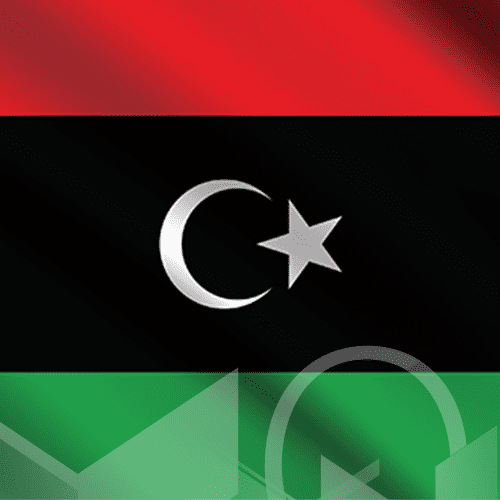
Filter
Sample Reports
Related Links
Libya
Libya, officially the State of Libya, is a country in the Maghreb region in North Africa bordered by the Mediterranean Sea to the north, Egypt to the east, Sudan to the southeast, Chad to the south, Niger to the southwest, Algeria to the west, and Tunisia to the northwest. It has a land mass of 1,759,540km² and a coastline of 1,770km, a population of 7 million and GDP of US$46.7bn which is expected to grow by 12.3% in 2025.
Its currency is the Libyan Dinar.
The economy is expected to rebound, primarily by the expansion of oil sector activities. Oil production is projected to average 1.3 million barrels per day, surpassing its ten-year historical average and marking a 17.4 percent increase from 2024. Consequently, GDP is anticipated to grow by 12.3 percent, and non-oil GDP growth is expected to remain around 5.7 percent, supported by consumption and exports, but is projected to slow to 4 percent in the medium term.
Non-hydrocarbon growth is set to remain between 5 and 6 percent in the medium term, supported by sustained government spending. The current account is slated to post a small surplus in 2025 (0.7 percent of GDP) before turning into a small deficit over the medium term, as oil prices remain subdued. The fiscal balance is projected to remain in deficit—albeit at a much lower level than in 2024—under the weight of continued large government spending.
Libya is a major global oil and gas producer, with capacity to contribute to European and African energy security. Historically, Libya has welcomed international companies and is now pushing for greater investment through partnerships. The country is entering a period of growth and opportunity, driven by energy, and it aims to increase oil production from 1.2 million barrels per day currently to 2 million. It needs solar energy and other power sources to provide power locally and for its neighbours.
UN-facilitated political talks involving 75 Libyan stakeholders in November 2020 culminated in the nomination of the Government of National Unity. The October 2020 ceasefire agreement between the former Government of National Accord and field marshal Belqasim Haftar’s LAAF (the former Libyan National Army) stipulated the departure of all foreign fighters from the country but according to the UN mission in Libya, thousands of foreign fighters from Syria, Russia, Chad, and Sudan, including members of private military companies remain in Libya.
Landmines were introduced to Libya during the armed conflict in Tripoli and surroundings, reportedly by the Wagner Group, a Russian government-linked company. According to a report by the UN Panel of Experts on Libya, internationally banned antipersonnel landmines manufactured in Russia were brought into the country in 2019 and early 2020.
Sources: Who Owns Whom sector reports, CIA Factbook, African Development Bank, World Bank, Trading Economics, African Statistical Yearbook and IMF. ?>
Company Profile
There is no data available at the moment
Sector Research
There is no data available at the moment


